This page contains affiliate links. Learn more in our Affiliate Link Policy.
This isn’t an exhaustive list of crafting supplies that you need. It’s not even a list of supplies you should use. It’s just a list of supplies I use. Some people may find that these supplies work well for them too, some people might want something entirely different. This list is good for beginners, because it’s relatively inexpensive. You also don’t need to buy everything all at once, I accumulated my supplies over several years. This page is a work in progress.
Find @Elvyler on Twitter to stay up-to-date on tips and new posts.
This page is broken into the following different sections:
- Cutting Materials Apart
- Fastening Materials Together
- Measuring Tools
- Other Useful Tools
- Decorating Supplies
- Useful Materials
Cutting Materials Apart
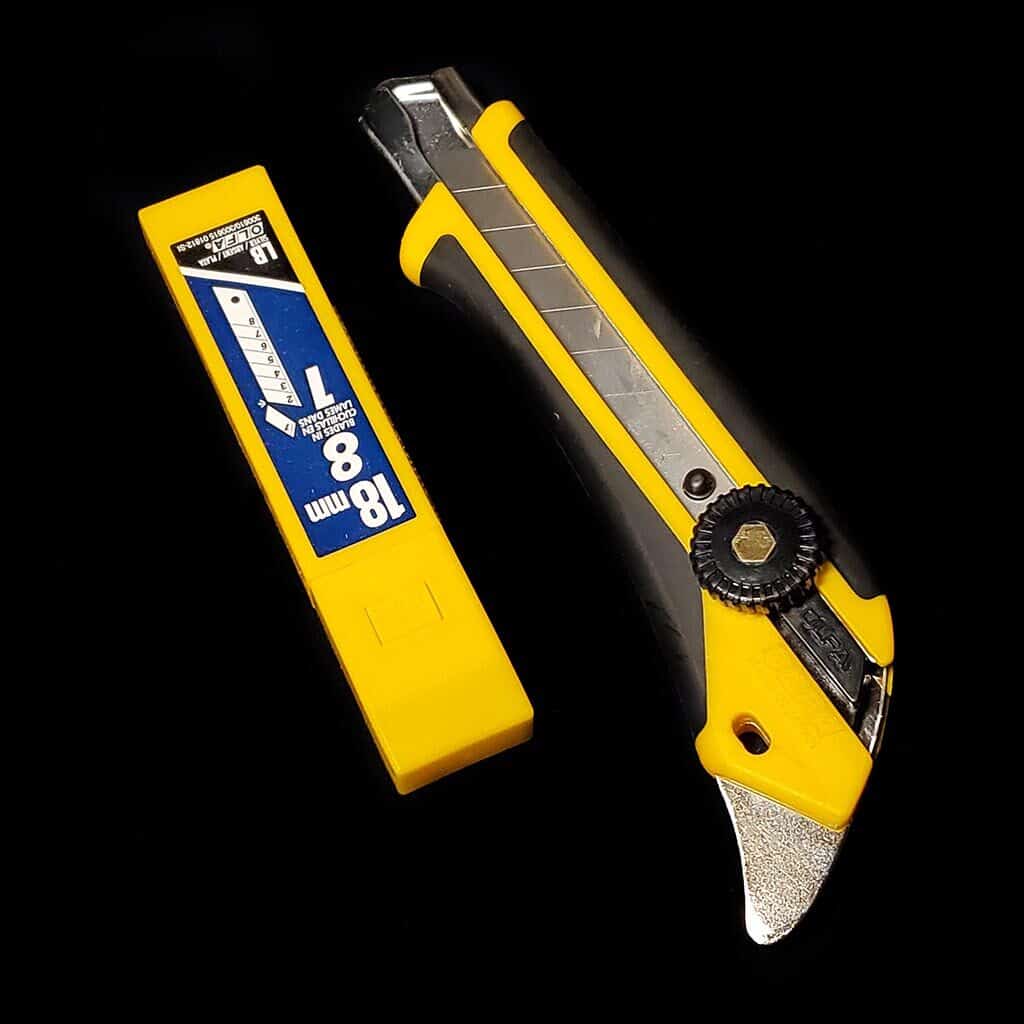
A good utility knife can be extremely helpful, one of the most important crafting supplies. Get a good quality knife with sharp blades. The dollar store knives use cheap steel that dulls faster. Cutting with a sharp blade is a lot safer than a dull one because you’ll have more control and it will be less likely to slip. Everyone always says, “don’t cut toward yourself”. I won’t tell you how to do it, but if not cutting toward yourself means you are cutting awkwardly, that can be more dangerous. Just don’t get too comfortable with the tool, that’s when accidents happen.
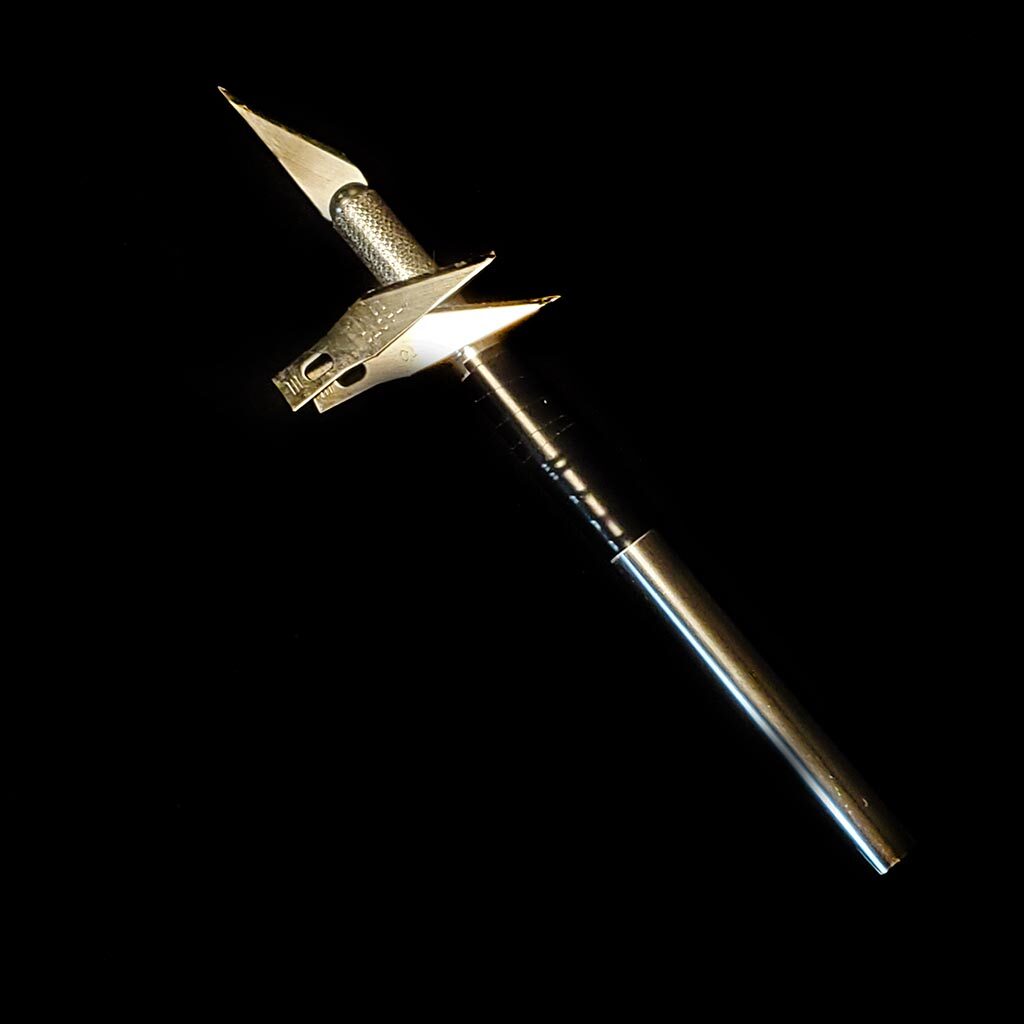
A good X-Acto knife is great for high-precision work. This fits places that your utility knife won’t. This isn’t a replacement for the utility knife, if you try to cut through too much, you’ll be biting off more than your little knife can chew. These range from a few dollars to really expensive knives with rubberized grips and fancy features. To “cut” costs, I just get the basic ones and wrap electrical tape around the handle to get that nice rubbery grip. The blades wear out pretty fast on these little guys. I wouldn’t worry about buying really expensive blades, I would recommend buying them in bulk.

This is a very versatile little saw. It’s small teeth make it very easy to cut through wood and plastic with a great deal of precision. I will not cut through hard metals. You might get away with cutting some soft metals like aluminum. Aluminum is fine to cut through with wood cutting tools, but this might not be enough for it. I also wouldn’t recommend cutting through any hard woods like oak or maple. Stick to the soft craft woods like pine and balsa. If, like me, you struggle to cut a straight line, you can get a little miter box accessory with guides for cutting 45 and 90 degrees.
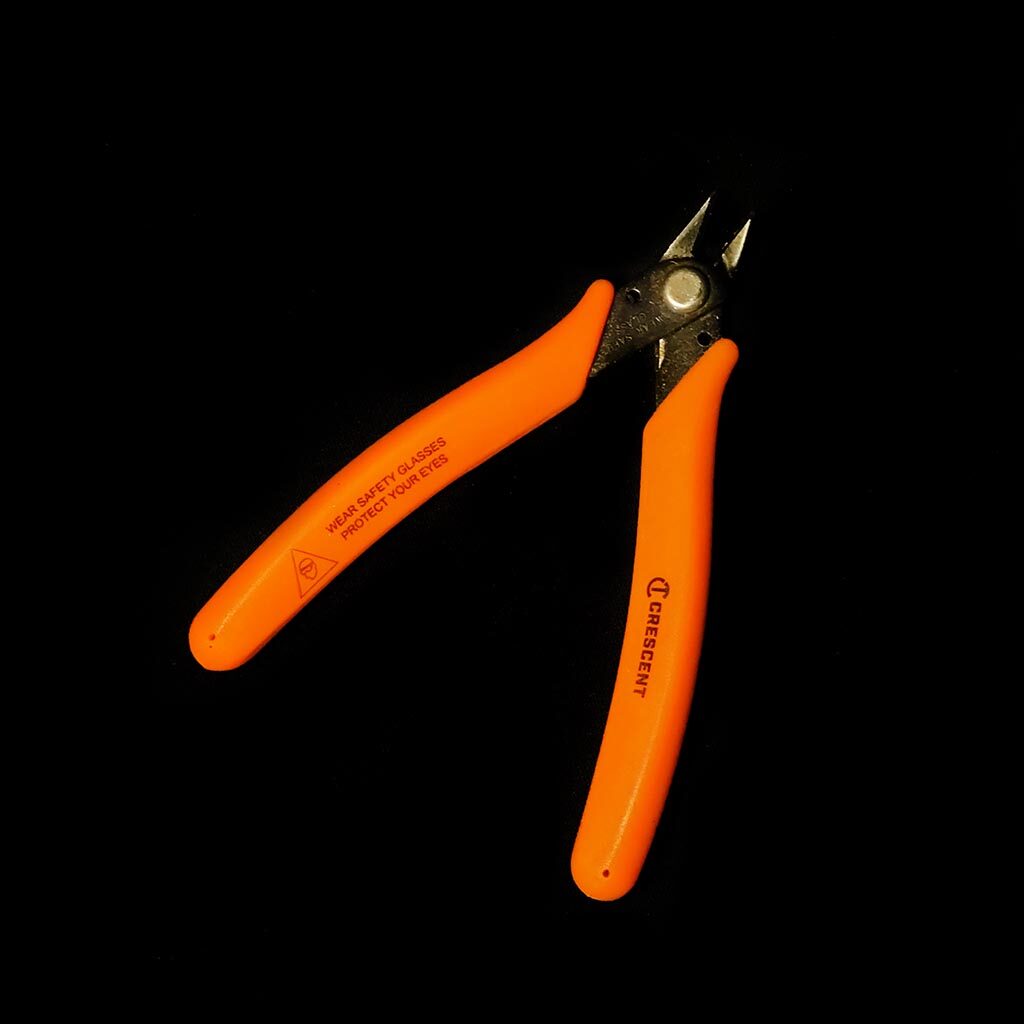
Flush cutters are useful for several things. They are useful for cutting miniatures and other plastic parts from sprues. They are also useful for cutting the tails off of zip ties without leaving a sharp bit on the end. Flush cutters may also be used for cutting small gauge wire. Don’t cut larger gauge wire or hardened wire, it will mar the edges and they will lose their usefulness. Scissors can work for a lot of these tasks also, but it’s nice to have a dedicated tool.
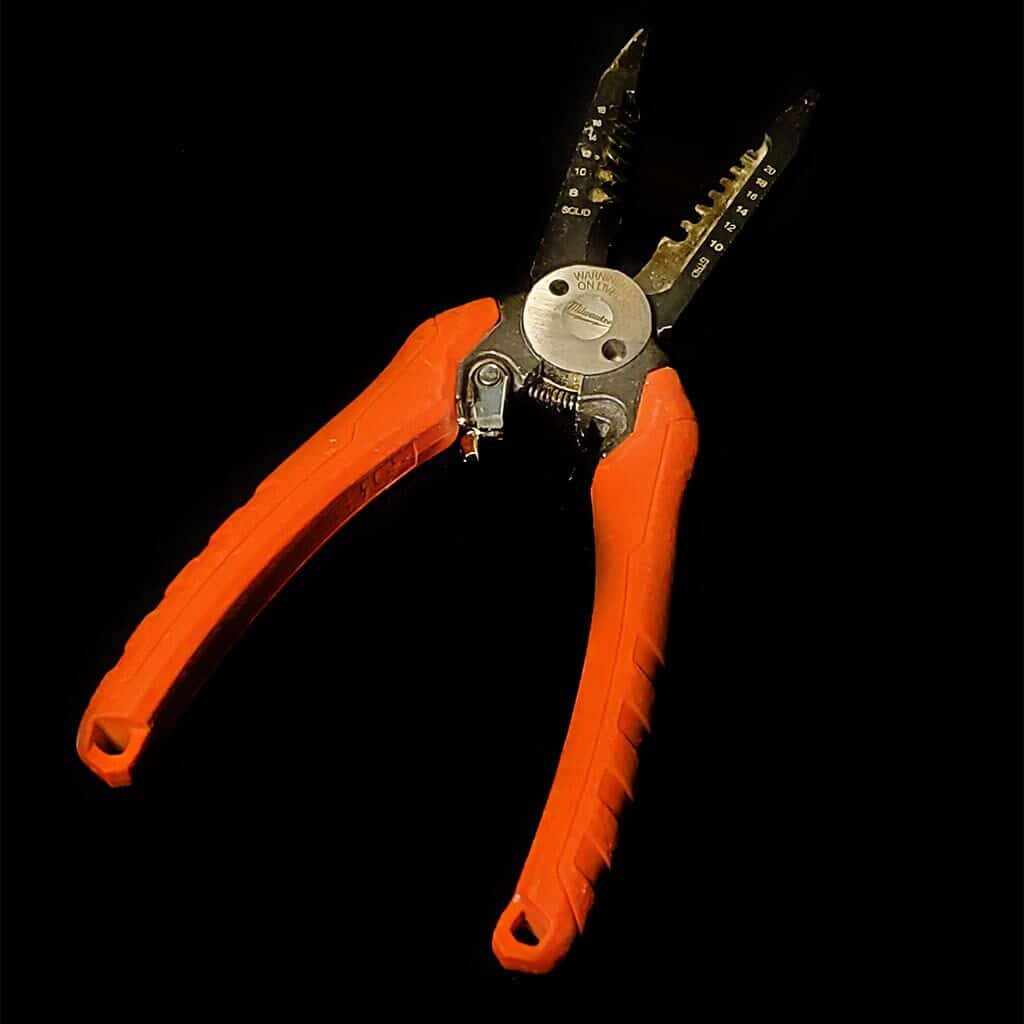
This is my favorite pair of wire cutters. It’s not just a cutter though, it also strips wires and has plier jaws for gripping as well. This tool can take care of a lot of jobs. It’s a little overkill to consider these crafting supplies. This pair isn’t essential. You can find a lot cheaper sets that will take care of everything that you need for crafting. Wire cutters do come in handy for cutting a variety of crafting materials including dowels, paperclips, and larger gauge wire that the flush cutters can’t handle.
Sticking Materials Together
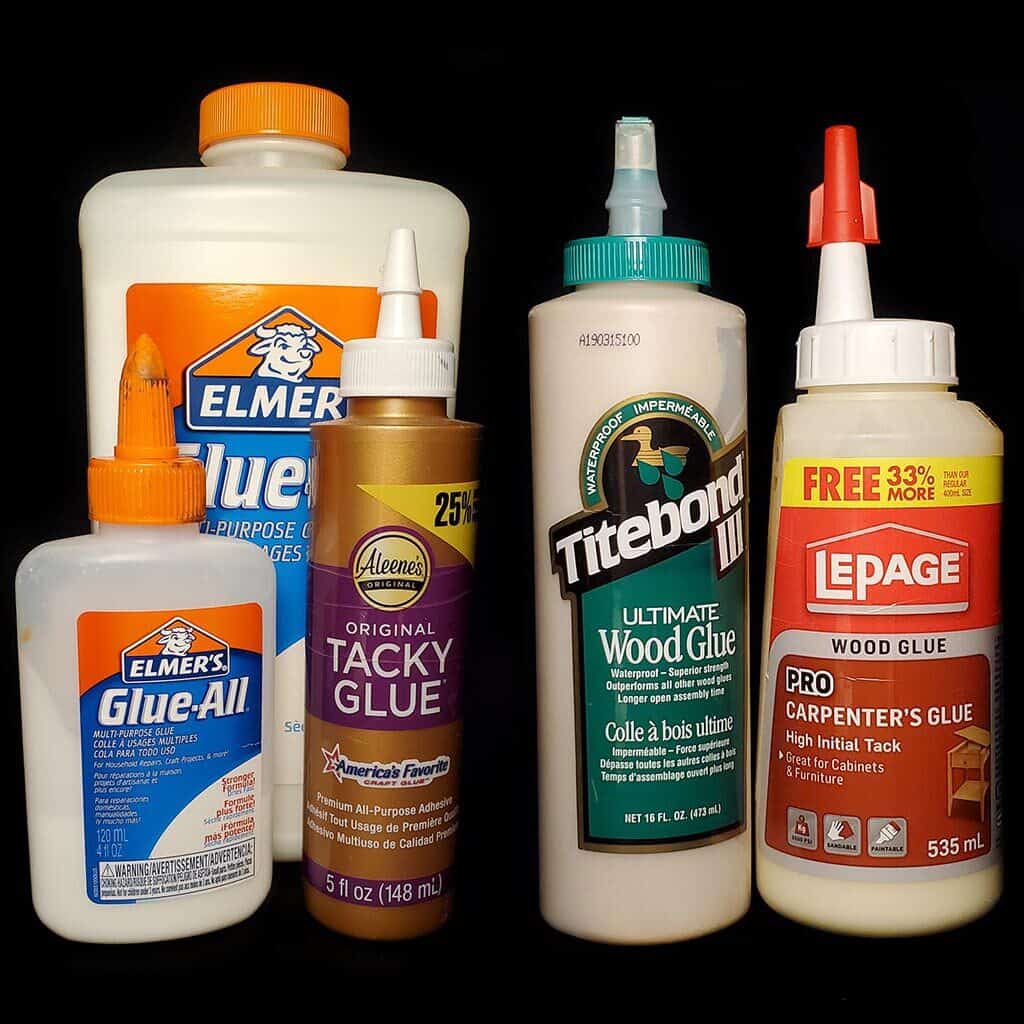
Elmers Glue-All and Aleen’s Tacky Glue are essential crafting supplies and great for sticking all kinds of materials together. They work well for gluing cardboard to cardboard, cardboard to foam, and foam to foam. Tacky Glue is thicker and provides a better initial tack. Glue-All is a thinner formula. You can dilute it with water in about a 50-50 mix and use it to apply flocking to terrain pieces. Some people even coat more fragile pieces in this glue to increase durability.
Wood Glue isn’t as important as some other adhesives in this list, but it has a place for some applications. You can get the cheapest wood glue that you can find. Unless you’re a woodworker, it’s unnecessary to spend the money on the really good stuff. Cheap wood glue is more than adequate for the craft wood we’re using. If you can find it, get the fast drying variety. It dries enough to handle in about 10 minutes.
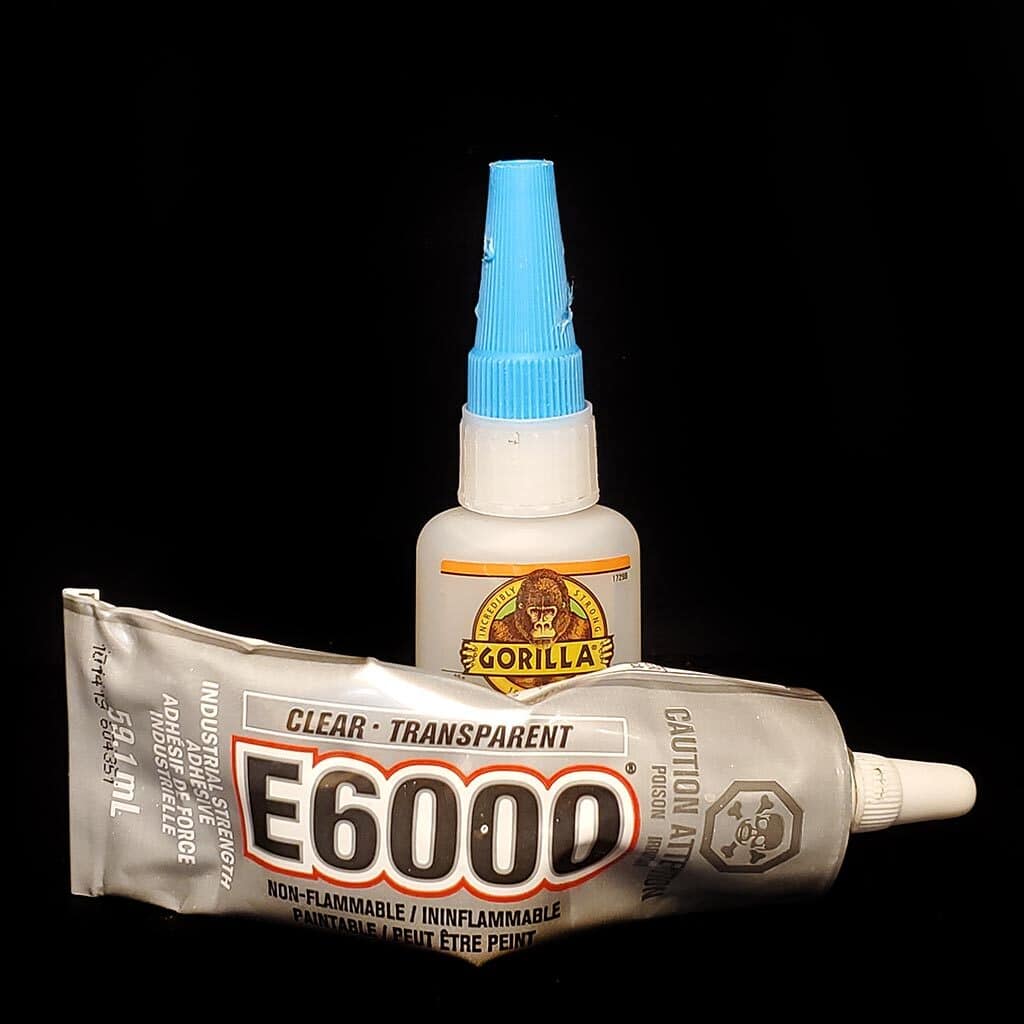
Super Glue and E6000 Craft Adhesive
These are ideal for sticking together two dissimilar materials such as wood to metal, plastic to metal, or plastic to wood. Super glue dries faster but has less bonding strength. Be careful with these products, it’s really difficult to get off of skin. In this situation, I’ve had the most success scraping it off with sandpaper, along with my skin. If you’re using foam as your material, both products will melt it.
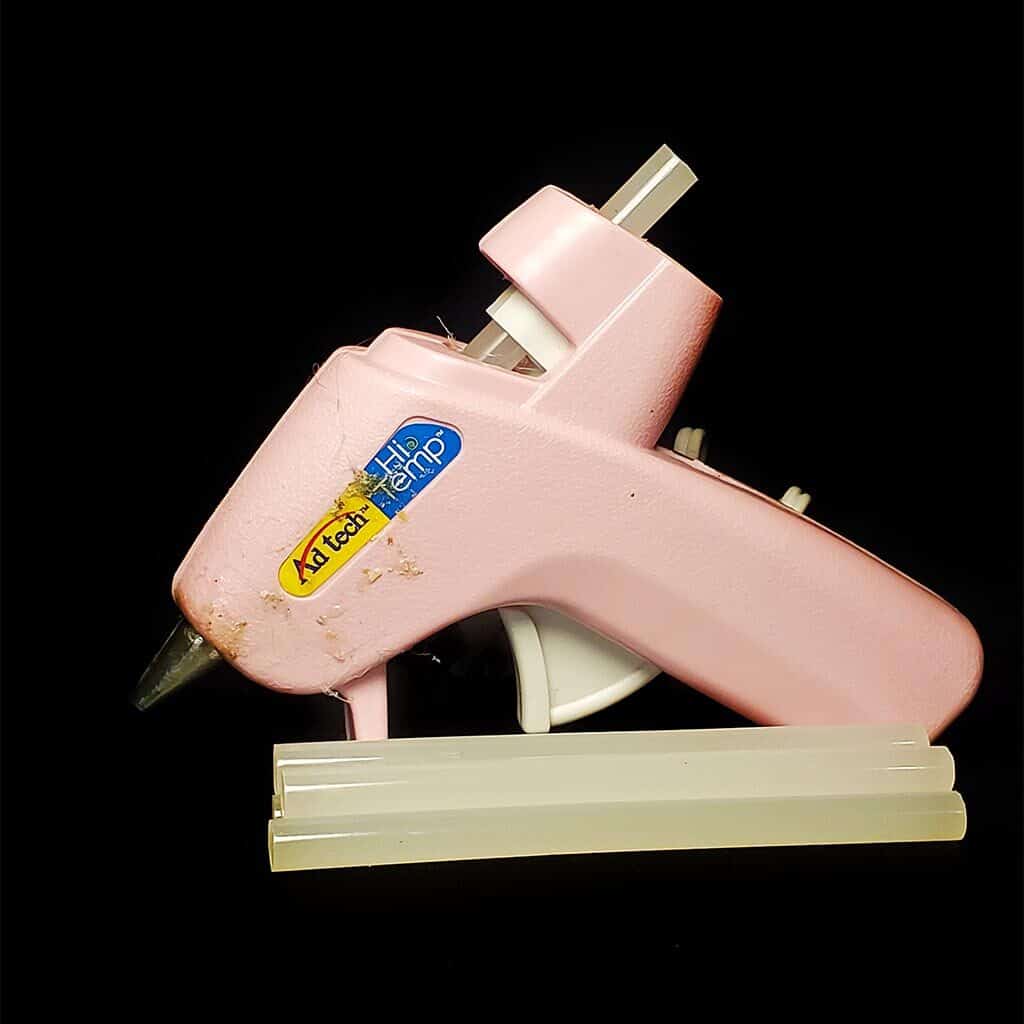
Hot glue is great for just about everything, it is king of crafting supplies. It sets quickly and bonds strong. It works on just about every material. I’m sure there is something out there that it won’t stick to, but I’ve never encountered a problem. My glue gun is old and cheap, cost a couple of dollars at Walmart. Some day I’ll upgrade to a nicer one, but this one has always done what I need it to.
Measuring Tools
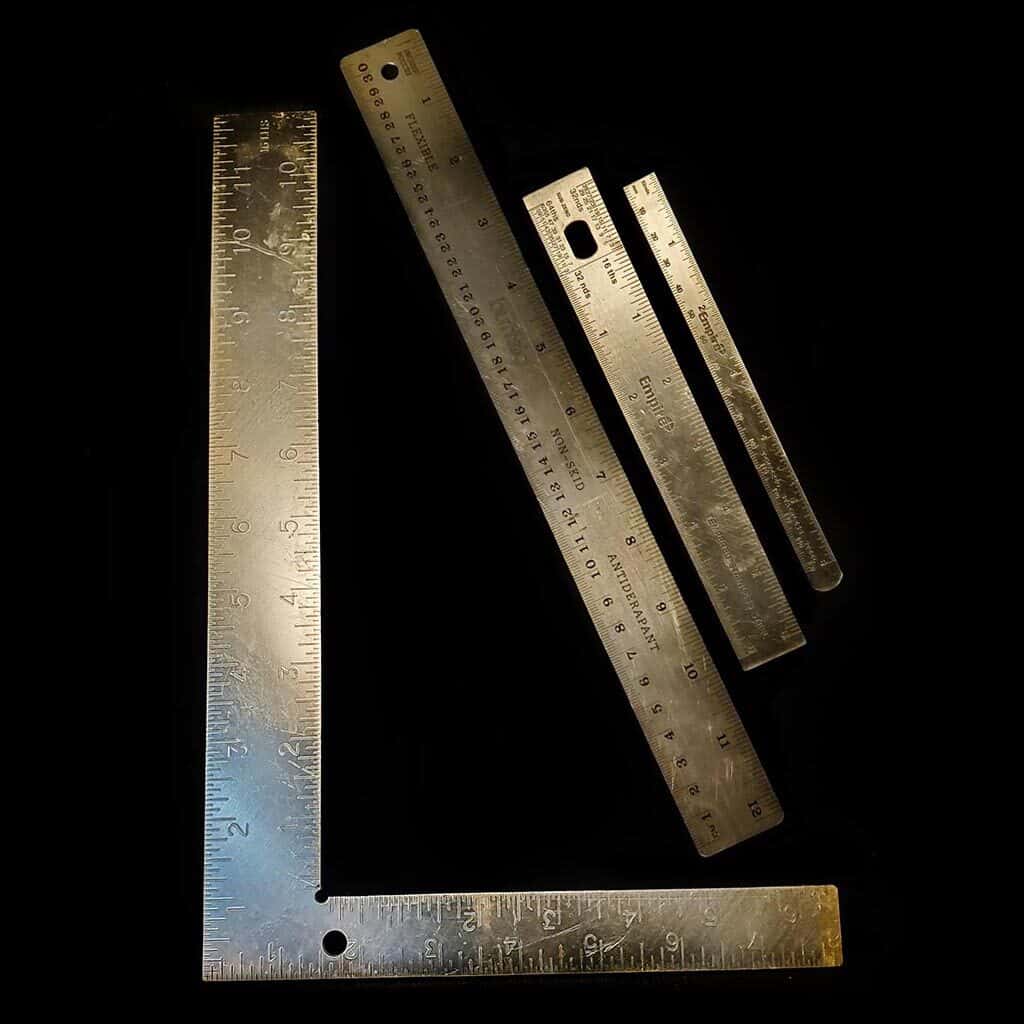
Rulers are great, get a bunch of different sizes. I would recommend at least having a 6-inch, a 12-inch, and a 4 footer. The smaller pocket rulers are fantastic too, great for carrying around with you. I also use it as a bookmark in my notebook so that if I need to make a straight line in an illustration, it’s always available. Don’t cheap out on this, buy one made of stainless steel or aluminum, it’ll last a long time and you’ll never have to buy another one, unless you lose it.
Get yourself a Small Construction Square. They go by many names: carpenter’s square, construction square, framing square. The important thing is that you get the one shaped like the capital letter “L” and is completely flat. These are great for laying things out and making “square” corners that are precisely 90 degrees.
Other Tools
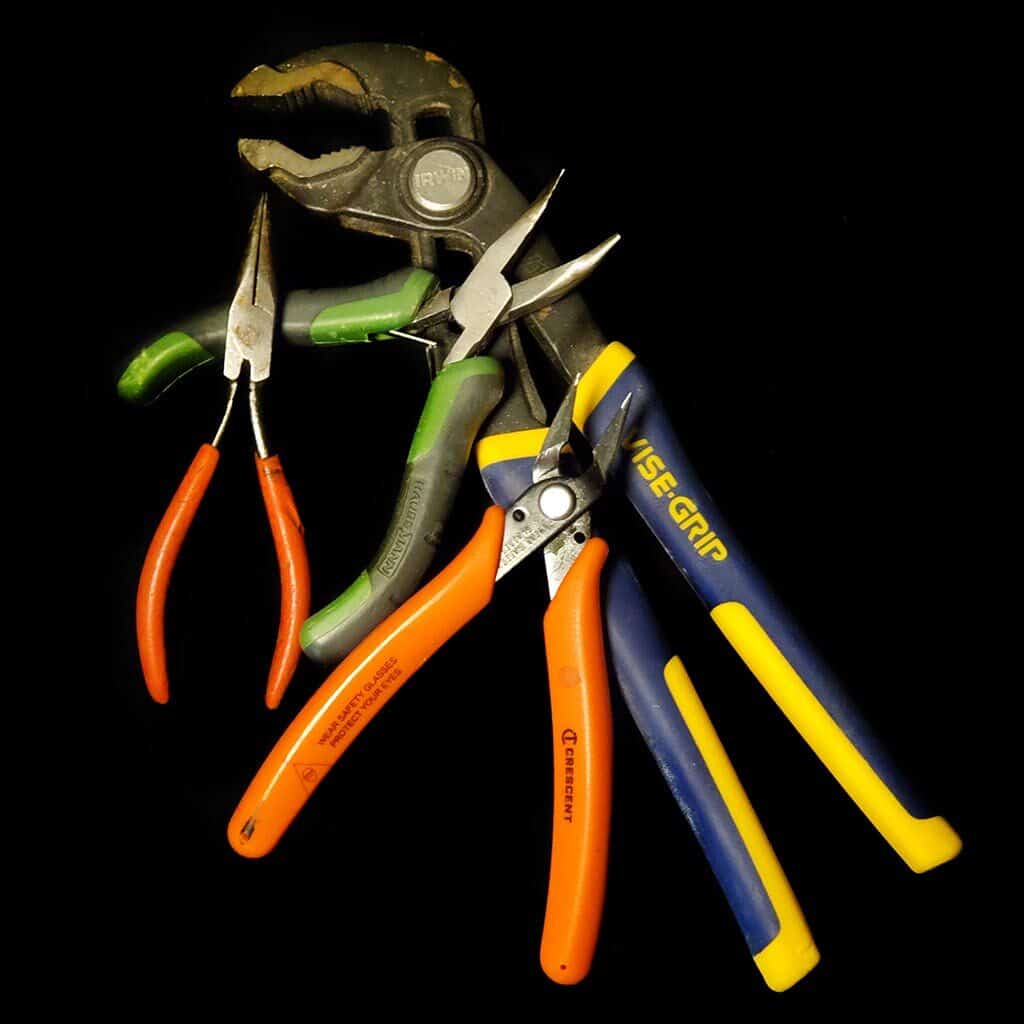
There are a lot of different kinds of pliers. I recommend at least getting needle nosed. These are good for holding and positioning small parts. The elongated needle nosed are really useful for reaching tight spaces. Another really useful holding device is tweezers. These are better suited to the precision placement of small and delicate pieces.

I use aluminum foil for one thing: crumple it up into balls and roll them on foam to give it a great stone texture. You don’t need any fancy foil, get the cheapest one you can find. Alternatively, you can also go into your backyard and get a rock. Try to find one that is rough and jagged, it will transfer a better texture to the foam.
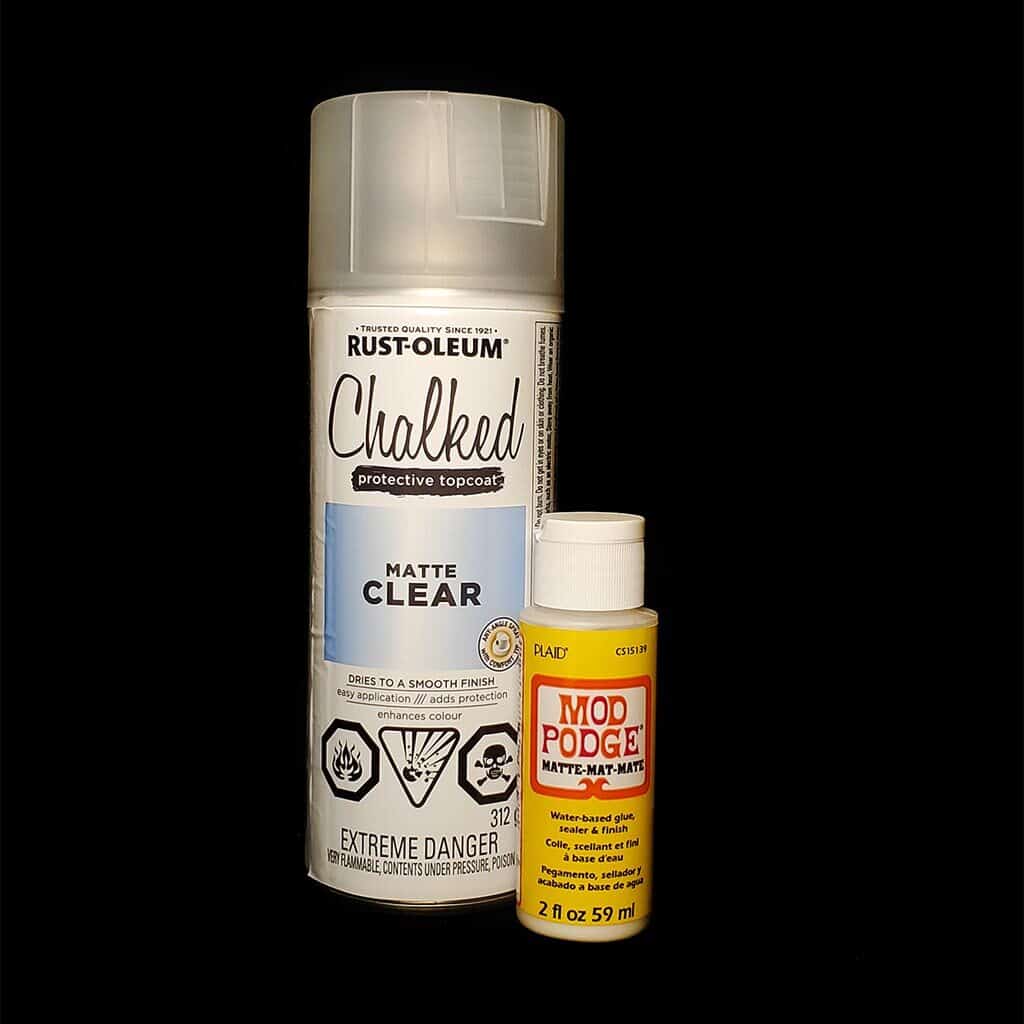
Mod Podge is an interesting substance, it’s kind of somewhere between paint and glue and some magic secret ingredient that makes it harden into a very durable coating. I use this to seal foam pieces before painting. It makes the parts stronger, and I’ve found that they take paint better after being sealed.
Use a good spray-on clear coat to seal your paint. If you handle your pieces a lot, it’s possible that the paint could wear out or chip off. Clear coats come in glossy or matte finishes. Glossy will leave the piece shiny. I usually go with the matte finish. Careful with any spray products around bare foam, it’s possible for some ingredients to melt foam.
Decorating Supplies

This is another of the essential crafting supplies. There are many brands available: Apple Barrel and Craftsmart are pretty inexpensive. Get a lot of black paint, you’ll use a lot of black for base coats. Paint Brushes come in several varieties as well, some cheap and some very expensive. You can get away with not spending a lot on brushes. Try a few different ones and see what works for you.
Useful Materials
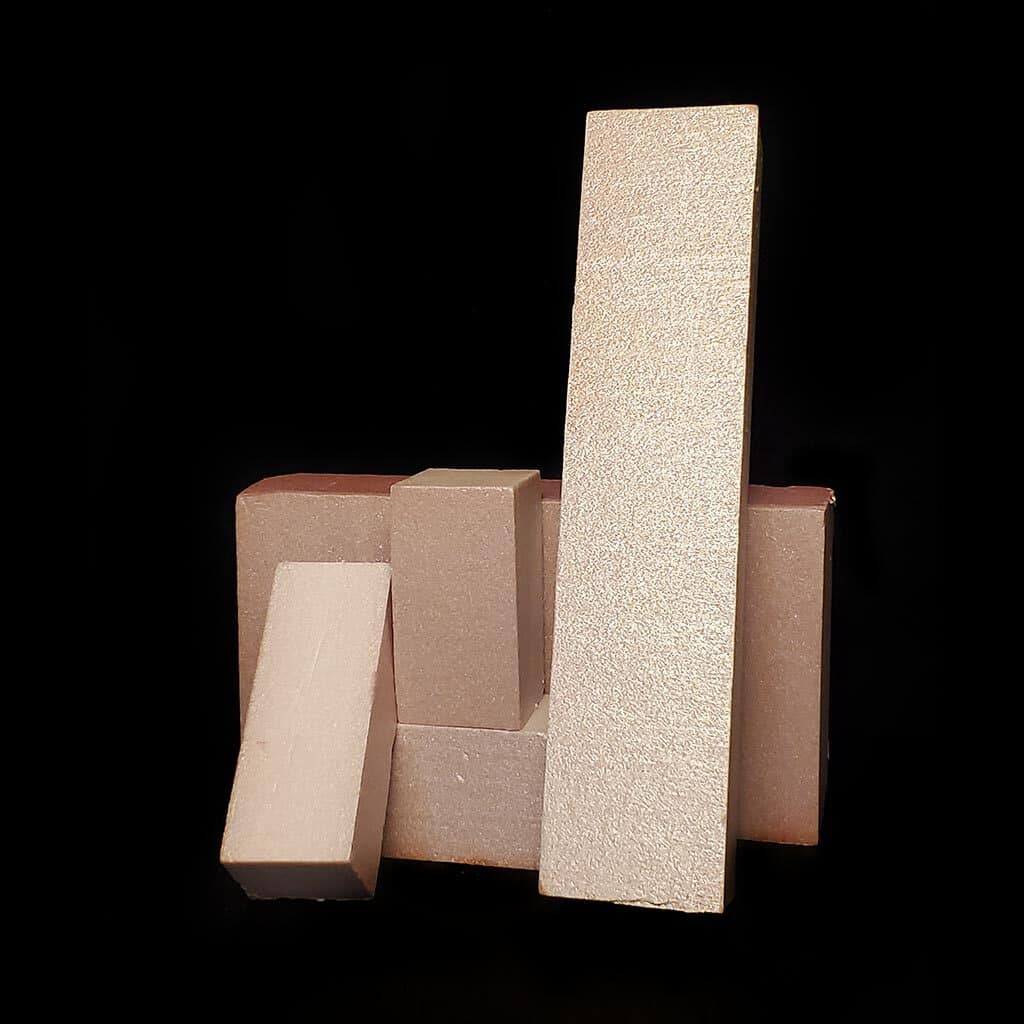
XPS Foam can be difficult for some people to find. Usually you can find it in your local hardware store. It’s commonly used to insulate houses. It usually comes in 4-foot by 8-foot sheets in several thicknesses. Some places will have smaller 2-foot by 2-foot project sheets that are easier to transport and store. You can cut this with a utility knife and it takes textures very well. Make sure you keep all the off-cuts, you never know when it might come in handy. Foam board are thinner sheets that you can find at the dollar store. It’s usually covered in paper on both sides.
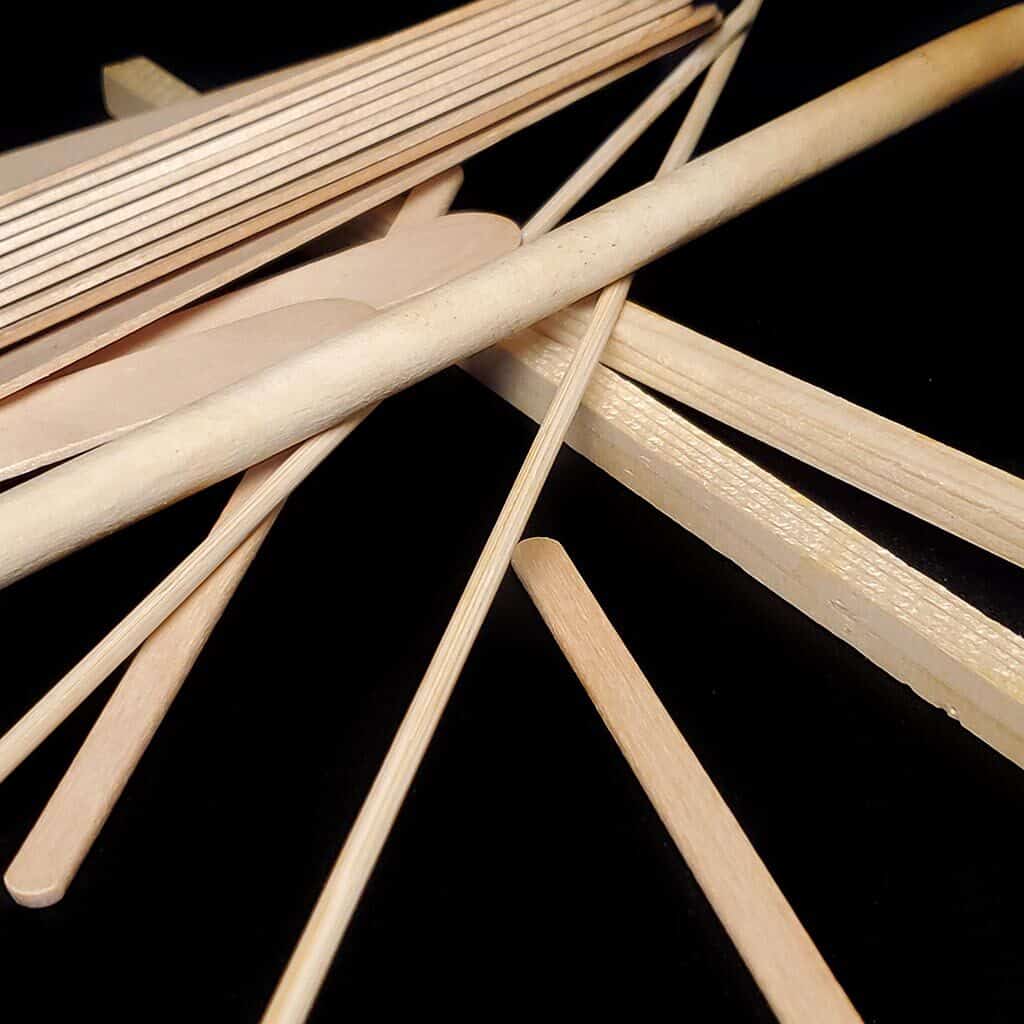
Wooden Pieces are also great crafting supplies. They come in a variety of shapes and sizes, and they all have their uses. There are toothpicks, skewers, and dowels. Then there are popsicle sticks, tongue depressors, and coffee stir sticks. There are also shapes available such as cubes, spheres, and others that you can use for many things.

Cardboard. There are several types: corrugated, double corrugated, chipboard, and cereal box. Cardboard has a lot of different uses. You can use it with foam to make things, you can use it instead of foam for some things. You can get cardboard everywhere. I’m sure there’s some in your pantry right now. Or you can use the boxes from all the crafting supplies you just ordered.
Thanks for visiting, hope to see you again soon!


